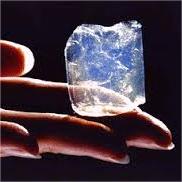Professional industry ceramic supplier, silicon nitride, silicon carbide, aluminum nitride and any other kinds of ceramics.
1. Introduction
In the past 48 hours, a surge in inquiries from metal foundries and lab technicians has highlighted growing concerns about premature failure of silicon carbide crucibles—often due to improper handling rather than material defects. As industries push for higher efficiency and cleaner melts, understanding how to correctly use and maintain your silicon carbide crucible is more critical than ever.

Silicon carbide crucibles are prized for their exceptional thermal conductivity, resistance to thermal shock, and ability to withstand temperatures above 1600°C. However, even the highest-grade silicon carbide can crack or degrade if mishandled. This guide offers actionable, step-by-step instructions to help you get the most out of your crucible while avoiding costly errors.
2. Understanding Your Silicon Carbide Crucible
Before diving into usage, it’s important to distinguish a true silicon carbide crucible from other ceramic products that share similar names. For example, items like ‘silicon carbide ceramic baking dish,’ ‘silicon carbide dinner ceramic plates,’ or ‘silicon carbide ceramic butter dish’ are marketing terms often used for decorative or cookware items and do not possess the structural integrity required for industrial melting.
A genuine silicon carbide crucible is made from advanced ceramic materials—typically reaction-bonded silicon carbide (RBSiC) or sintered SiC—and is engineered for metallurgical, laboratory, or glass-melting applications. Do not confuse it with alumina (Al2O3), zirconia (ZrO2), or silicon nitride crucibles, which serve different purposes. While boron carbide vs silicon carbide debates exist in armor and abrasives, silicon carbide remains the go-to for cost-effective, high-performance crucibles.
3. Step-by-Step Guide to Using a Silicon Carbide Crucible
3.1. Pre-Drying and Preheating
Never place a cold or damp silicon carbide crucible directly into a hot furnace. Moisture trapped in microscopic pores can flash into steam, causing cracks. Always dry the crucible at 150–200°C for 1–2 hours before first use or after storage.

Then, gradually preheat it in the furnace: start at 300°C for 30 minutes, ramp to 600°C for another 30 minutes, and finally bring it to operating temperature over 1–2 hours. This slow ramp prevents thermal shock.
3.2. Charging and Melting
- Add only clean, dry charge material to avoid introducing moisture or contaminants.
- Avoid overfilling—keep material below 80% of the crucible’s capacity to allow for expansion and stirring.
- Use non-metallic tools (e.g., graphite or silicon carbide rods) to stir; metal tools can scratch or chip the crucible wall.
3.3. Cooling and Removal
After melting, allow the crucible to cool slowly inside the furnace with the power off. Rapid cooling by removing it into ambient air can cause fractures. Once below 200°C, it’s safe to handle with tongs.
4. Common Problems and Solutions

4.1. Cracking or Spalling
This is usually caused by thermal shock or mechanical impact. Solution: Always follow proper preheating protocols and avoid dropping or striking the crucible.
4.2. Glaze Formation or Slag Buildup
Certain alloys or fluxes can react with the crucible surface, forming a glassy layer. While minor buildup is normal, excessive slag reduces heat transfer. Clean gently with a soft brush—never use abrasive pads or water on a hot crucible.
4.3. Reduced Lifespan
If your crucible fails after only a few uses, check for incompatible materials. For instance, aluminum and zinc can aggressively attack silicon carbide at high temps. In such cases, consider a silicon nitride crucible factory product, as silicon nitride offers better resistance to reactive metals.
5. Maintenance and Storage Tips
After each use, inspect the crucible for hairline cracks or erosion. Store it in a dry, room-temperature environment—never leave it outdoors or in humid conditions.
Avoid stacking crucibles unless they’re designed for it. If you use related components like silicon carbide ceramic columns, silicon carbide ring, or RBSiC silicon carbide tile blocks in your setup, ensure they’re also kept clean and dry to prevent cross-contamination.
Note: Industrial parts like silicon carbide burner nozzles, silicon carbide brick, or silicon carbide tubes share similar care principles but may have application-specific nuances.
6. When to Choose Alternatives
While silicon carbide crucibles excel in many scenarios, they aren’t universal. For highly corrosive melts (e.g., certain slags or reactive rare-earth metals), zirconia crucibles or custom silicon nitride heat shields might be better. Similarly, high purity silicon nitride powder market trends show increasing adoption in semiconductor and aerospace labs where contamination must be minimized.
Remember: silicon nitride ceramic components—like silicon nitride plate, silicon nitride ring, or silicon nitride crucible—are more expensive but offer superior chemical inertness in specific environments.
7. Conclusion
A silicon carbide crucible is a powerful tool when used correctly—but it demands respect for its material limits. By following these practical steps for preheating, operation, and maintenance, you’ll extend its service life, improve melt quality, and avoid unnecessary downtime. Whether you’re in a small lab or a large foundry, treating your crucible with care pays off in performance and cost savings.
Our Website founded on October 17, 2012, is a high-tech enterprise committed to the research and development, production, processing, sales and technical services of ceramic relative materials such as How. Our products includes but not limited to Boron Carbide Ceramic Products, Boron Nitride Ceramic Products, Silicon Carbide Ceramic Products, Silicon Nitride Ceramic Products, Zirconium Dioxide Ceramic Products, etc. If you are interested, please feel free to contact us.




